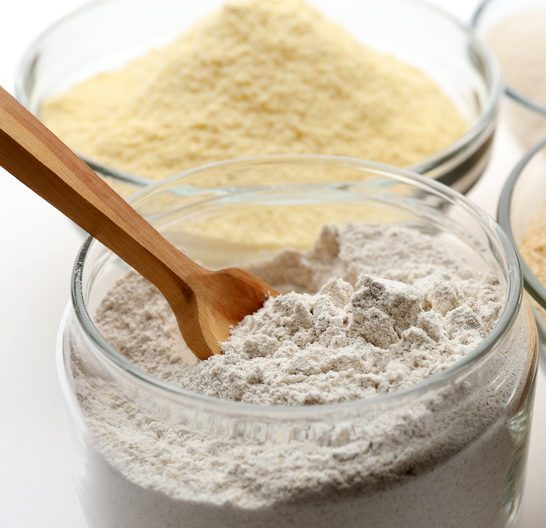Grano Duro and Grano Tenero. We hear about these wheats all the time. Why do they cause so much confusion? We have been talking a lot about this distinction with our miller Filippo Drago and also with our friends at Mulino Marino in Piemonte. We finally have cleared up our confusion and it is really not that difficult.
Naming
Grano means wheat in Italian. Grano Duro and Grano Tenero are two distinct wheat typologies. Grano Duro is triticum turgidum durum in Latin and durum wheat in English. Grano Tenero is triticum aestivum in Latin and in English goes by common wheat, bread wheat, and/or soft wheat.
All wheats fit into the Duro/Tenero dichotomy. Tumminia, that’s Grano Duro, as is Perciasacchi (aka farro lungo, no it is not farro), and Senatore Cappelli. Some examples of Grano Tenero varieties are Maiorca, Bologna, Ballero, Autonomia, and Gentile Rosso.
The terms Duro and Tenero only apply to wheat. Other grains such as rice, barley, and quinoa do not fall into this dichotomy.
Within the Grano Tenero category, there is a flour naming system with numbers. For example, you may be familiar with Italian 00 flour. The 00 number indicates how much bran (or crusca) is in the flour, aka the amount of fiber in the flour, aka how whole the grain is. In the 00 case, there is no bran. Therefore, when it comes to flour made of Grano Tenero the naming system, in order of increasing fiberiness, is:
Tipo 00 – no bran, the whitest of them all
Tipo 0 – a small amount of bran
Tipo 1 – more bran
Tipo 2 – even more bran
Tipo Integrale – totally whole wheat
Growing
In Italy, Grano Duro is south. It is generally cultivated in Sicilia, Puglia, and Basilicata. Grano Duro needs a warmer climate and needs less water to flourish.
Grano Tenero, on the other hand is north. It is generally found in Piemonte, Lombardia, Emilia Romagna. Both Grano Duro and Grano Tenero can be found in Sicilia.
Eating
The basic difference between these two wheat varieties is their ability to be worked into food.
Grano Duro is always the raw material for pasta secca, dry pasta. With Grano Duro we produce semola di grano duro, semola rimacinata, and farina di grano duro. Semola is characterized by a yellowish color. Look at our Pasta Martelli, for example. It’s made with 100% Italian semola di grano duro and it has a yellowinsh tint. In southern Italy Grano Duro is used to make bread as well. Like Pane Nero di Castelvetrano in Sicily or Pane di Altamura in Puglia. Golden, honey, nutty, crunchy, fluffy, earthy, crispy, grainy, malty, roasted, rustic.
Grano Tenero is the best option for baked sweets. Also, Grano Tenero is traditionally used for fresh pasta like ravioli or gnocchi, because it has a more neutral taste that allows filling or sauces to stand out. For all the other fresh pasta shapes both Tenero and Duro give outstanding results, they can even be blended together! Both wheat types alone or blended together are great for breads, pizzas, and focaccia.
And there you have it!

Hmmm , I still do not understand what semola di grano dura is.
Does Italy grade the flour in terms of protein content. They typically name the flours as tipo 0, 00, 1, 2 but what is the protein content of each.
Ciao! Italy does not grade the flour in terms of protein content, the numbers only refer to how much natural bran was left in the flour, that is how wholegrain it is.
There are many varieties of wheat and each one has a different protein content. That’s regardless of how finely they are milled, with what kind of mill, or how much the bran is sifted out.
That’s why it is so important to mention the wheat variety of the flour, like Filippo Drago does with Tumminia or Maiorca or all his other flours. So each bag of flour should say its protein content, and a tipo 1 Tumminia flour will have a different protein content than a tipo 1 all purpose flour. Some of Filippo’s flours have 11.8g of protein per 100g and some others have 12.5g of protein per 100g, for example.
I noticed that I needed less water than normal when making my pizza dough with this flour. Will that be the case for egg/flour ratio for pasta?
Ciao D!
For fresh pasta (4 servings) I use 300 grams/1¼ cups of flour (Tumminia or Maiorca) and 2 large eggs + 1 egg yolk (approx. 150 grams/2.30 oz). I start with 250 grams of flour (5/6 of total) and as I’m kneading I eyeball how much more flour I need.
Hi there, i would like to re post your explanation posted april 9 2017 “Grano Duro Grano Tenaro Whats the difference” on our local facebook page here in Western Australia called Freo food bread. would this be possible as i think its useful and a good explanation, i have been promoting some of the Italian flours available to use here to our members and your explanation would be of great help. Happy to acknowledge credit. many thanks for your consideration Derek
So what flour would you recommend for a “pane cafone” ?